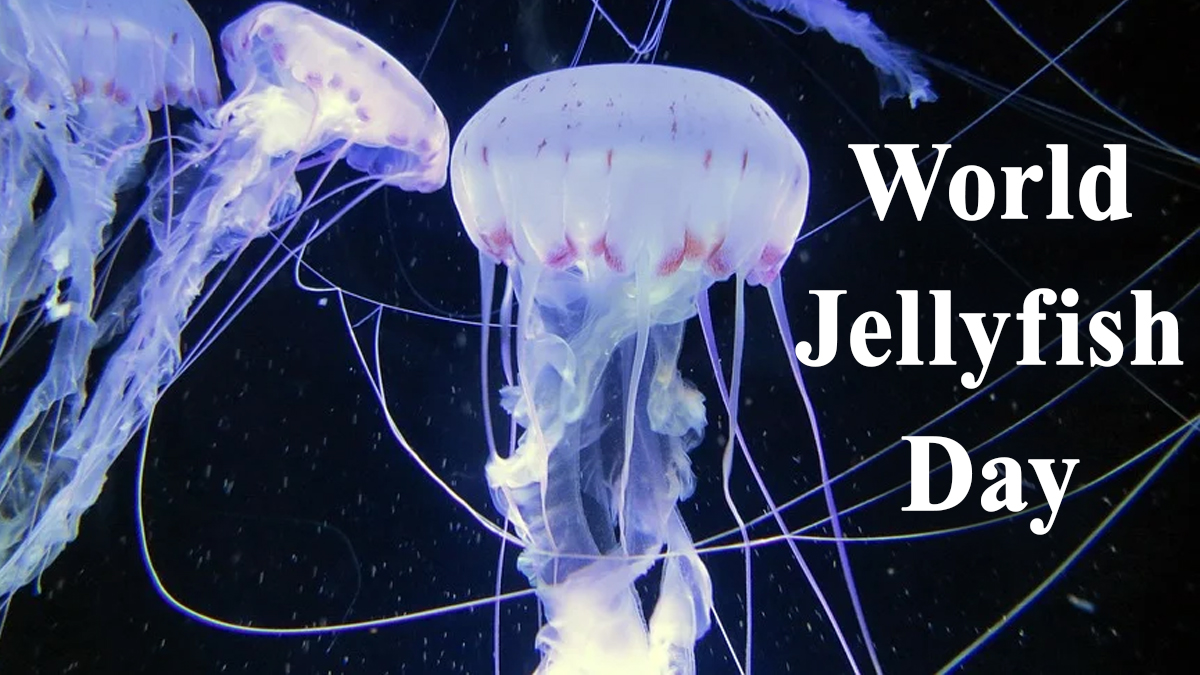Most jellyfish are free-swimming sea creatures with umbrella-like bells and trailing tentacles. The term “jelly” or “sea jelly” is used all over the world, from surface waters to the deep sea. In some cultures, it is consumed by people, and it is also used in research. People around the world celebrate World Jellyfish Day on 3 November.
History of World Jellyfish Day
Since 2014, the third day of November serves as the date of World Jellyfish Day. It’s spring in the Southern Hemisphere, and it’s that time of year when jellyfish begin to migrate to Northern Hemisphere coastlines.
Learn about jellyfish
Jellyfish have a significant impact on the biomass, spatiotemporal dynamics and community structure of global marine plankton ecosystems. These are very important marine creatures which are studied and researched. They also serve as food in many cultures. In China, jellyfish are used as a delicacy and are also an important part of traditional remedies. Jellyfish can also keep small fish in their web. It is believed that jellyfish are older than dinosaurs and have been present on Earth for more than 500 million years. There is no heart or bones in their body. However, they do have a central nervous system and a mouth located in the middle of the body. Some jellyfish can glow in the dark. The best way to celebrate World Jellyfish Day is to find an aquarium nearby where we can see these sea creatures.
Significance of World Jellyfish Day
Jellyfish have a significant impact on the biomass, spatiotemporal dynamics and community structure of global marine plankton ecosystems. They provide food for us, harboring young fish in their tentacles, and they are being studied for potential medical applications due to the green fluorescent protein that causes their bioluminescence, toxins, and tissues.
Interesting facts about jellyfish
- Jellyfish have existed for over 500 million years and are older than dinosaurs.
- In addition to lacking bones and a heart, jellyfish also lack a brain, having only a central nervous system. However, this does not prevent them from being intelligent and able to adapt to their surroundings.
- There are jellyfish that can glow at night! People who have this trait have bioluminescent organs, which emit blue or green light when touched.
- Hair jelly is the name of a giant species of jellyfish. In 1870, the largest discovery ever made was washed up in Massachusetts, USA. Its tentacles were even longer than those of the blue whale, more than 120 feet long.
- The mouth of a jellyfish is located in the middle of its body.
- Fish, shrimp, crabs and small plants are the main sources of food for jellyfish, which digest their food very quickly.
- In Chinese culture, jellyfish are considered a delicacy and are also used in traditional remedies.
- Humans may experience pain from jellyfish stings, and some species may even die as a result.
- A “bloom,” “swarm,” or “smack” of jellyfish is a collection of them. What a fun way to describe this group of unusual and fascinating creatures.
- In a special breeding facility, jellyfish experts at the London Aquarium have bred barrel jellyfish from their initial stage as polyps.
